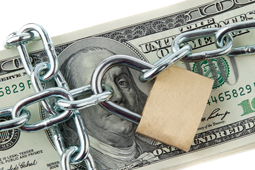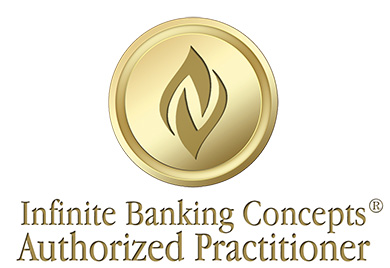“You’re thinking of this place all wrong… as if I had the money back in a safe. The money’s not here. Your money’s in Joe’s house…right next to yours. And in the Kennedy house, and Mrs. Macklin’s house, and a hundred others. Why, you’re lending them the money to build, and then, they’re going to pay it back to you as best they can.”
-George Bailey, It’s a Wonderful Life
These famous lines from Frank Capra’s holiday classic, It’s a Wonderful Life, have been used to explain how banking works, though the details don’t exactly reflect current realities. Today, we WISH that our banks were as conservative as George Bailey’s fictional Building and Loan. If John could only borrow what Sally had originally deposited, there would be less risk!
Fractional Reserve Banking 101
Investopedia defines fractional banking as “a banking system in which only a fraction of bankdeposits are backed by actual cash-on-hand and are available for withdrawal.” But banks don’t simply loan out 90% of what they have taken in, they create money through credit, or (defined another way) debt. And for better or worse, it is this unsecured “money” that comprises a large part of our economy.
Reserve requirements are only 3-10% at most banks, which means a bank can lend John 10 or even 33 times or more what Sally has deposited. When a bank issues a credit card or lends money to a mortgagee, the borrower’s qualifications (and the bank’s reserves) allow the bank to literally manufacture money out of thin air. No printing press required.
So what gives money its value? Certainly not the paper it’s printed on. It’s also not backed by “the gold standard,” as was once the case. Its value is the worth that people agree the currency represents. The value is furthermore derived from the confidence that a society has in the institutions and governments that back the currency. In Frank Capra’s movie, the townspeople’s confidence in George Bailey stopped the bank run.
Worry Increases Over Bank Safety
So when home and stock values started sliding into the abyss in 2008 and 2009, what stopped people from running to the bank to withdraw their funds? The idea that their money was “FDIC insured.” To bolster confidence, the FDIC even threw more chips into the poker game, increasing insurance on savings accounts from $100k to $250k in 2008, and temporarily guaranteeing unlimited funds in checking accounts. People felt reassured that their money was in a secure place – in a bank insured by the Government of the United States.
There was only one problem: this confidence wasn’t backed with real assets, but with a poker-faced bluff. As one blogger asserted, “If you think your bank deposits are “insured” or “safe” because of FDIC protection, you’re totally irrational.”
New worries have been raised with the December 31, 2012 scheduled expiration of Frank-Dodd reforms, which saw the temporarily expanded FDIC insurance on non-interest bearing accounts reduced to $250k per investor per bank. A January, 23, 2013 Bloomberg.com article, “US Bank Deposits Drop Most Since 9/11 Terror Attacks” revealed, “Net withdrawals at the 25 largest U.S. lenders totaled $114.1 billion in the week ended Jan. 9, pushing deposits down to $5.37 trillion, according to Federal Reserve data released last week.”
But the change in FDIC guarantees should not worry us – we should have already been concerned. VERY concerned. According to a 2009 FDIC publication entitled “No Safer Place in the World for Your Money,” “If needed, the FDIC can quickly borrow money from the U.S. Treasury. The FDIC has immediate access to a $100 billion line of credit at the Treasury that, under federal law, can be expanded to $500 billion.”
While hundreds of billions may sound like a lot, consider the fact that U.S. bank deposits are estimated at $5.37 trillion. To clarify, in the case of widespread panic and bank failures, the Federal Deposit Insurance Corporation claims to have “immediate access” to a credit line that would ensure every American could have near-instant access to nearly two cents on each dollar. (Hmm…) And if they raided the Treasury (such as your social security or the defense budget), they could come up with nearly 10 cents per dollar. (What part of that is supposed to make us feel better!?)
By any objective analysis, the banking system has become essentially an illiquid Ponzi scheme run by the Federal Reserve, which shares more in common with Bernie Madoff (or a poker player, no offense to any poker players) than George Bailey. Imagining our banking system sound does not actually make it so.
A Safe Place to Put Your Cash
So if Americans can’t even withdraw more than 10% on any given day without causing a bank collapse… if the stock market is unpredictable at best and unstable at worst… if we’re all being bluffed into believing the corporate financial players at the poker table have real assets backing up their chips in spite of all the evidence to the contrary… Where IS our money SAFE?
Perhaps good old George left us a clue:
“Now, we can get through this thing all right. We’ve got to stick together, though. We’ve got to have faith in each other.”
George Bailey had the right idea, even if the wrong structure. Since their inception in the US in 1752 when Benjamin Franklin established the Philadelphia Contributionship for the Insurance of Houses From Loss by Fire, mutual insurance companies have proven themselves as some of the most stable financial institutions in history. Owned entirely by policyholders, not shareholders, mutual insurance companies are financial institutions by the people and for the people. They have paid dividends without fail through the depression, and today are invested in by major banks to the tune of billions of dollars.
In cash value life insurance, Policyholders can save money in truly safe, guaranteed accounts through properly structured cash value life insurance policies. They can borrow against the money as they like, and they can bypass worries of stability, annual capital gains taxes, and puny interest rates of typical banks.
We think that everyone should know about cash value insurance, which some people fittingly call “Privatized Banking.” We think it truly is the solution to the instabilities of our economy, and yes, potentially an instrument that can even free Americans from being Wall Street victims. As a matter of fact, that’s our dream… to see American investors take their money back from the Potters of this world who enrich themselves at their expense, and build prosperity for themselves.
Are you looking for a safe place to put your money? If you want to do much better than .5% returns in unstable institutions, and if you are tired of the “max out your 401k and keep your fingers crossed” advice of typical financial planning, we’ve got an alternative. To learn more about Partners for Prosperity, Inc., we invite you to listen to a recent interview our own Kim D. H. Butler did with Todd Strobel, the No BS Money Guy, on Guide to Financial Peace Radio.
To find our more specifically about using cash value whole life as a powerful financial instrument, read Kim Bulter’s powerful little book, Live Your Life Insurance today.
Do you feel your money is safe in a bank? Why or why not?
©Prosperity Economics Movement




